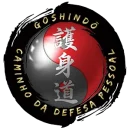

陰陽 In-Iō (in Japanese) or Yin-Yang (in Chinese) are two opposing energies. 陰 In (Yin), represented by the dark side, signifies darkness, while 陽 Iō (Yang) is clarity and light.
Light, which is a luminous and intensely bright energy, is Iō (Yang), while very faint light is In (Yin). The world is composed of opposing forces, and finding balance between them is essential, which is what this symbol represents.
Chinese philosophy is primarily composed of negative and positive energies. The two spheres within the symbol symbolize the idea that every time each of these forces reaches its extreme point, it carries within itself an opposing sentiment.
In combat, one works with harmony rather than opposition. For instance, when countering an opponent's attack, you should respond while preserving yourself, using movements that follow the opponent's motion effortlessly, employing a common reaction.
In motion, when In-Iō (Yin-Yang) reaches their extremes, a reaction is initiated, with In (Yin) transforming into Iō (Yang) and vice versa.

The circle symbolizes constant movement. It means you should never stop. This constant movement applies to both physical motion and the act of doing something to improve and continually evolving, always in motion.

Go or Mamoru means "Protect".

Shin or Mi means "Body".

Dō means "Way".
